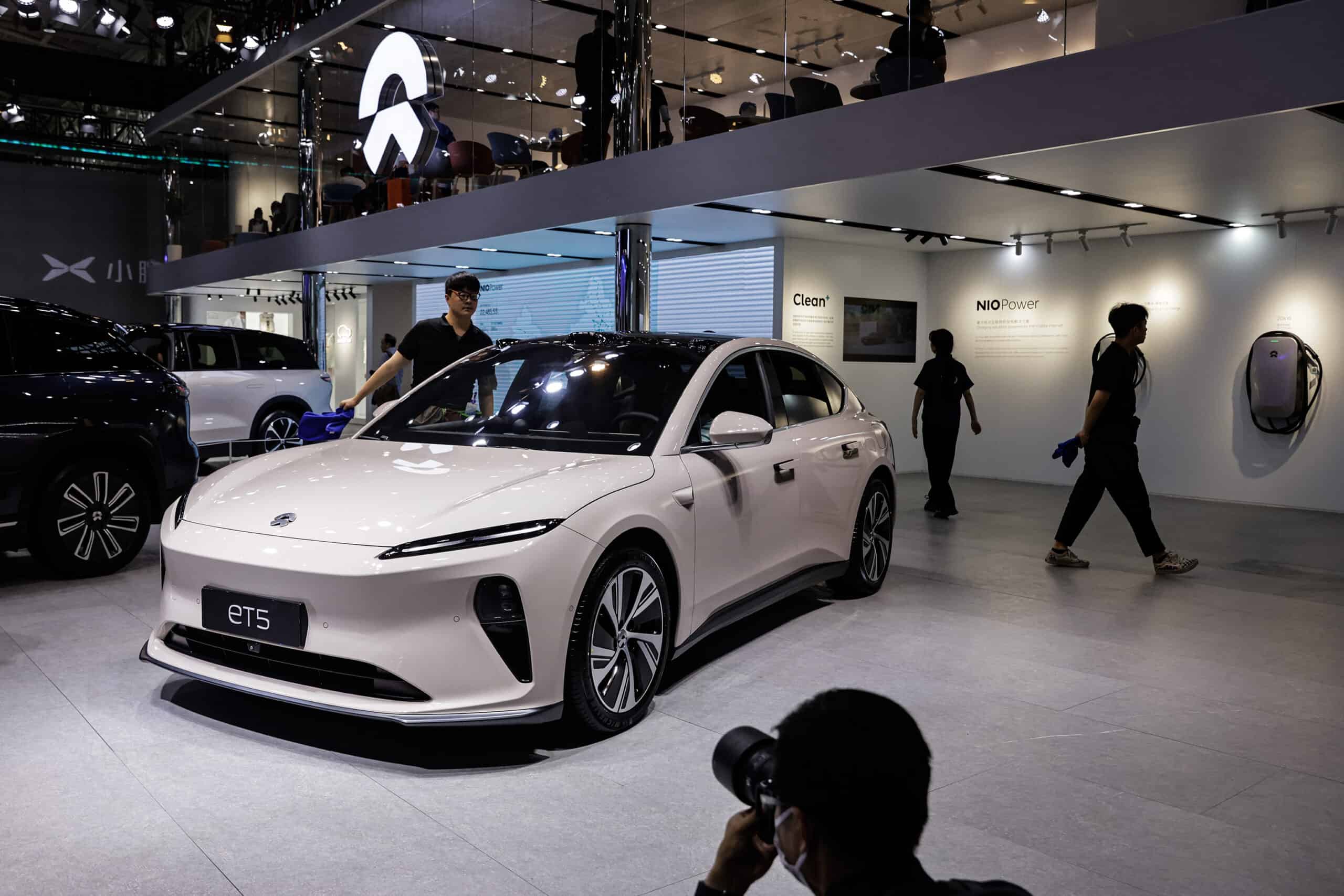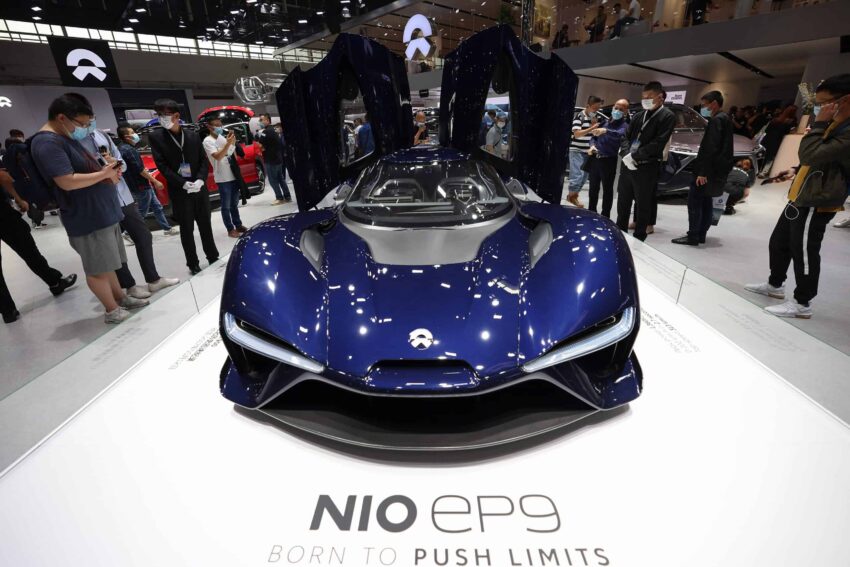The tariff-driven market volatility has been rough on shares of Chinese electric vehicle (EV) maker Nio Inc. (NYSE: NIO), which in April fell to a multiyear low of $3.02. Though shares rebounded afterward, they are now down 5.7% year to date, despite an 11.2% pop in the past week after strong June delivery numbers. Nio reported a solid increase in deliveries in the first and second quarters, following the launch of its new mass-market brands, Onvo and Firefly.
24/7 Wall St. Key Points:
-
Nio is the third-largest electric vehicle company in China and the first to pioneer swappable battery packs.
-
Due to new product launches and growing market share, 24/7 Wall St. projects significant gains for the stock by the end of the decade.
-
If you’re looking for a megatrend with massive potential, make sure to grab a complimentary copy of our “The Next NVIDIA” report. It includes a complete industry map of AI investments, including many small caps.
The stock is now trading just 1.2% lower than six months ago. Compared to a year ago, Nio’s share price is down 16.1%. Analyst sentiment remains fairly cautious, with 13 of 27 of them recommending buying shares. Their mean price target has ticked down to $4.73, but that suggests they see 15% or so upside in the next 12 months. Note that the high price target is all the way up at $8.18. Goldman Sachs recently upgraded its rating to Neutral. Mizuho recently reiterated its Neutral rating on the shares, and it has a $3.50 price target. Barclays maintained its Underweight rating with a $3.00 target. But Morgan Stanley reiterated its Buy rating.
There are some encouraging tailwinds for shareholders, though. The Chinese carmaker’s high-performance models, which feature a +600-mile range, have caught the eye of vehicle enthusiasts and investors, while addressing range anxiety issues by creating battery swap technology as a supplement to charging. Nio is a leading electric vehicle manufacturer in China and has been expanding its presence internationally.
From a stock performance standpoint, Nio has been a tale of two stories. When shares debuted on the New York Stock Exchange on Sept. 12, 2018, at $9.90, they struggled to build momentum. Not until the summer of 2020 did the stock begin to surge, gaining over 810% from June 26, 2020, to Feb. 9, 2021, when the stock hit its all-time high of $62.84. Shares have fallen considerably since then, but the long-term outlook remains strong.
24/7 Wall St. aims to provide readers with our assumptions about the stock’s prospects going forward, what growth we see in Nio stock for the next several years, and what our best estimates are for Nio’s stock price each year through 2030.
Nio Stock Early-Stage Growth
The following is a table of Nio’s revenues, operating income, and share price for its first few years as a public company.
| Year | Share Price (End of Year) |
Revenues (CNY)* | Operating Income* |
| 2018 | $5.39 | 4,951.2 | (9,595.6) |
| 2019 | $3.45 | 7,824.9 | (11,079.2) |
| 2020 | $40.00 | 16,257.9 | (4,607.6) |
| 2021 | $16.70 | 36,136.4 | (4,496.3) |
| 2022 | $7.87 | 49,268.6 | (15,640.7) |
| 2023 | $4.71 | 55,617.9 | (22,655.2) |
*Revenue and operating income in Billion CNY (1CNY=.14 USD)
Now let’s take a look at Rivian Automotive Inc. (NASDAQ: RIVN) in the first few years it was a publicly traded company (here is Rivian’s stock price forecast):
| Year | Share Price (End of Year) |
Revenues | Operating Income |
| 2021 | $50.24 | $5.67 | ($0.71) |
| 2022 | $19.30 | $7.14 | ($2.27) |
| 2023 | $10.70 | $7.83 | ($3.19) |
| 2024 | $4.36 | $9.00 | ($2.99) |
Revenues and operating income in billions
Both firms have shown similar revenue growth, but Rivian’s annual operating losses are more than double those of Nio.
Nio formerly contracted its manufacturing to Jianghuai Automobile Group, paying a fee for each vehicle produced in addition to fixed costs. The company has since acquired the factory from JAC. This agreement was beneficial for a young start-up in a very capital-intensive market. However, once scale is reached, the variable cost model has its downsides.
Three Key Drivers of Nio’s Performance

Product Portfolio Expansion and Growing Market Share
- New Model Launches: Similar to Tesla Inc. (NASDAQ: TSLA), Nio started off with a higher-end roadster and used the higher-end models to re-invest into more affordable, mass-market vehicles. Nio aims to push further into price-conscious markets while also adding options for its more premium customers.
- Add-On Services: With its battery swap technology, Nio plans to roll out an innovative battery-as-a-service solution for its customer base. The company plans to build over 4,000 swap stations by the end of 2025, with 1,000 of them located outside China.
Increased Vehicle Deliveries and Market Penetration
- Growing NEV Adoption: The market for new energy vehicles (NEVs) is on the rise in China. Nio expects vehicle deliveries in 2025 to double the output from 2023 (which was roughly 165,000 units). This still only makes up about 2% of the Chinese NEV market and gives Nio plenty of roadway to gain market share for years to come.
- International Expansion: Nio’s strategy includes expanding its market presence outside China. The company built its first overseas battery-swap station in Hungary in 2022 and has several service centers and Nio accessory businesses throughout Europe.
- In December 2024, the company delivered 31,138 vehicles, good for a 72.9% year-over-year increase. In total, 221,970 vehicles were delivered in 2024, which was a year-over-year increase of 38.7% compared to 2023. Cumulative deliveries reached 671,564 as of Dec. 31, 2024.
Advancements in Technology and Customer Experience
- Battery and Charging Solutions: Nio’s advancements in battery technology and charging solutions aim to alleviate range anxiety among consumers and help lower the overall cost of the vehicle by 15% to 30%.
- Focus on Younger Consumers: Nio’s leadership in EV technology will provide brand equity to younger generations of drivers who value enhanced technology packages.
How Nio’s Next Five Years Could Play Out
| Year | Revenue* | Shares Outstanding | P/S Est. |
| 2025 | 97,052 | 2,050 mm | 1x |
| 2026 | 114,172 | 2,050 mm | 1x |
| 2027 | 134,643 | 2,050 mm | 1.5x |
| 2028 | 257,634 | 2,050 mm | 1.5x |
| 2029 | 176,533 | 2,050 mm | 1.5x |
| 2030 | 189,548 | 2,050 mm | 2x |
*Revenue in CNY millions
Compared to Rivian and Tesla, Nio’s price-to-sales valuation will be moderately discounted. While Nio is in solid financial standing and has a premium brand image, it remains uncertain how much competition the company will face both in China and as it expands overseas. The company is already spending a quarter of revenues on R&D and if Nio cannot capitalize on this spend, the stock price will be sluggish compared to North American EV manufacturers.
As mentioned, Wall Street analysts give Nio a one-year price target of $4.73. That represents 15.1% upside potential from the current share price. At 24/7 Wall St., we expect to see revenue growth of 60% for the year, with a price-to-sales multiple of 1x, which puts our year-end price target at $4.21. That would be a gain of 2.4% from today’s share price.
For 2030, we estimate Nio’s stock price to be $23.56 per share. Our estimated share price would be 577.0% higher than the current one.
Here is a look at our projections for the years in between:
| Year | Price Target | Upside |
| 2025 | $4.21 | 2.4% |
| 2026 | $6.12 | 48.9% |
| 2027 | $13.80 | 235.8% |
| 2028 | $24.01 | 484.2% |
| 2029 | $16.45 | 300.2% |
| 2030 | $23.56 | 473.2% |
Rivian Automotive Stock Price Prediction for 2025: Where Will It Be in 1 Year
The post Nio (NYSE: NIO) Stock Price Prediction and Forecast 2025-2030 (July 17) appeared first on 24/7 Wall St..
Click this link for the original source of this article.
Author: Joel South
This content is courtesy of, and owned and copyrighted by, https://247wallst.com and its author. This content is made available by use of the public RSS feed offered by the host site and is used for educational purposes only. If you are the author or represent the host site and would like this content removed now and in the future, please contact USSANews.com using the email address in the Contact page found in the website menu.









